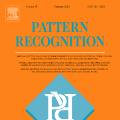With the advent of intelligent jammers, jamming attacks have become a more severe threat to the performance of wireless systems. An intelligent jammer is able to change its policy to minimize the probability of being traced by legitimate nodes. Thus, an anti-jamming mechanism capable of constantly adjusting to the jamming policy is required to combat such a jammer. Remarkably, existing anti-jamming methods are not applicable here because they mainly focus on mitigating jamming attacks with an invariant jamming policy, and they rarely consider an intelligent jammer as an adversary. Therefore, in this paper, to employ a jamming type recognition technique working alongside an anti-jamming technique is proposed. The proposed recognition method employs a recurrent neural network that takes the jammer's occupied channels as inputs and outputs the jammer type. Under this scheme, the real-time jammer policy is first identified, and, then, the most appropriate countermeasure is chosen. Consequently, any changes to the jammer policy can be instantly detected with the proposed recognition technique allowing for a rapid switch to a new anti-jamming method fitted to the new jamming policy. To evaluate the performance of the proposed recognition method, the accuracy of the detection is derived as a function of the jammer policy switching time. Simulation results show the detection accuracy for all the considered users numbers is greater than 70% when the jammer switches its policy every 5 time slots and the accuracy raises to 90% when the jammer policy switching time is 45.
翻译:随着智能干扰器的出现,干扰袭击已成为对无线系统性能的更严重威胁。智能干扰器能够改变其政策,以尽量减少被合法节点追踪的可能性。因此,需要有一个能够不断适应干扰政策的防干扰机制来打击这种干扰政策。值得注意的是,现有反干扰方法在此不适用,因为它们主要侧重于减少干扰袭击,采取无差别干扰政策,而且很少将智能干扰器视为对手。因此,在本文中,可以使用干扰型识别技术来尽量减少被合法节点追踪的可能性。因此,提议采用的识别方法使用了一种经常性的神经网络,将干扰器所占据的渠道用作干扰器的投入和干扰器型的输出。在这个机制下,首先确定实时干扰政策,然后选择最适当的反制衡措施。因此,对干扰器政策的任何改变,只要采用拟议的识别技术,可以迅速转换为新的反干扰型识别方法,同时采用反干扰技术。提议的识别精确度系统,在将干扰器的精确度调整每部位的精确度调整每部位时,即对干扰器的精确度进行一次测试,即对干扰动作的精确度进行模拟定位,即评估,即对干扰动作的精确度测测算。




